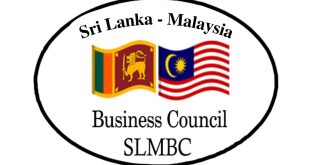Bilateral trade volumes are significantly up as Moscow targets the Islamic world for new trade and development opportunities
By Farzad Ramezani Bonesh, with additional commentary by Chris Devonshire-Ellis
Due to the Ukraine conflict, Russia has lost part of its supply chain and Western-origin suppliers, compounded by most Western based countries imposing sanctions and cutting off their economic relations with Russia. However, to counterbalance this, Russia made a significant change in its international trade flows. Russia’s long-term economic ties with Europe have substantially decreased while alternative alliances, already positioned and in place for such an eventuality have been rapidly expanded, including with Islamic countries. This article explores those relations.
A New Foreign Policy Concept
At the end of March 2023, Russia’s new Foreign Policy Concept was approved. This includes the documentation of priorities, goals, and objectives of Russian foreign policy activities and overall national development and other strategies.
This specifically calls for the development of relations with various regional trade blocs and opportunities for the development of global trade and investment. It deals with issues such as the balance of global power and the creation of a multipolar international system, the structural transformation of the world economy, deepening economic globalization, the expansion of new national and cross-border payment systems, new international reserve currencies, diversifying the mechanisms of International economic cooperation.
In addition, strengthening Russia’s position in the global economy, achieving national development goals, and ensuring economic security and realizing its economic potential, international economic cooperation, and support, strengthening its presence in global markets, and increasing non-resource and non-energy exports have all been highlighted as strategic undertakings by Moscow.
The document also mentions specific regions of interest to Russia: the BRICS, Shanghai Cooperation Organization (SCO), Commonwealth of Independent States (CIS), Eurasian Economic Union (EAEU), and Collective Security Treaty Organization (CSTO). Of these, the BRICS, SCO and EAEU are discussing the formation of a collective integration trade partnership between them.
The Organization of Islamic Cooperation

This integration also includes the strengthening of all-round beneficial cooperation with member countries of the Organization of Islamic Cooperation, increasing trade and investment with African governments and African integration structures, developing all-round and reliable cooperation with Iran, and providing all-round support to Syria, and are also parts of the new document.
In addition, this aims at deepening mutually beneficial multilateral partnerships with Türkiye, Saudi Arabia, Egypt, and other member countries of the Organization of Islamic Cooperation, releasing the economic potential of the member countries of the Organization of Islamic Cooperation with the aim of creating a large Eurasian partnership and playing a role in promoting peace, and emphasizes trade and investment in the Middle East.
Following this approach, Russian President Vladimir Putin recently emphasized the traditional relations based on mutual trust between Moscow and Muslim countries, pointing them out as new emerging trade partners, and to promote agricultural and industrial cooperation and establish transport and logistics chains, and close commercial cooperation with these nations.
Russia, with more than 20 million Muslims, is looking to bring Russian businesses closer to the Islamic world, and by creating a new front in Islamic countries, it is both attempting to change the global geopolitical landscape as well as source new supply chains and trade partners.
In addition, many regional groups such as ASEAN, with which Russia is also heavily engaged, have Muslim members with Indonesia and Malaysia, while several ASEAN countries have significant Muslim populations, as does China.
Top Ten Islamic Trade Partners of Russia
Türkiye

In 2021, just prior to the Ukraine situation, Russia exported US$20.1 billion of products to Türkiye, including refined oil, crude oil, and wheat. The same year, Türkiye exported US$5.93 billion to Russia. The main exports from Türkiye to Russia were citrus fruits, motor vehicles, auto parts, and accessories, stone fruits and similar items.
Now, Türkiye is among Russia’s main trading partners, ranking second after China. The volume of foreign trade between Russia and Türkiye in 2022 reached a historical high, with oil accounting for the largest increase in Türkiye’s imports. Consequently, Türkiye’s trade with Russia increased significantly last year. According to the Türkiye’s customs statistics, bilateral trade with Russia has doubled and reached US68 billion. Imports from Russia reached US$58.85 billion, while Türkiye’s exports to Russia almost doubled to US$9.34 billion.
With Ankara refusing to join Western sanctions against Moscow, foreign trade has increased significantly. Russian companies have flocked to Türkiye, and mutual investment has reached more than US$10 billion. The energy position is also prominent in relations by having two gas pipelines – BlueStream and TurkStream – and a gas hub for the creation of “important” infrastructure and the Akoyo Nuclear Power Plant (NPP). With Turkish President Erdogan just re-elected, a continuation of Turkish bilateral trade and investment with Russia can be expected, with the added potential of a Turkiye-EAEU Free Trade Agreement.
Kazakhstan

Kazakhstan and Russia have a common border of 7,644 km, with Kazakhstan being the rail corridor between Russia and China. Kazakhstan is a member of the CIS and EAEU, and the development of mutually beneficial cooperation with Russia is a main priority of Kazakhstan’s own foreign policy.
From Moscow’s point of view, mutual trade relations will increase with the permanent launch of the Russia-Central Asia Summit, the updating of Russia’s bilateral investment treaties with countries in the region, and mutual trade and investment.
Russian investment in Kazakhstan has reached US$17 billion, while 2022 trade increased by 34.7% compared to 2021. Bilateral trade reached US$25.6 billion dollars in 2022. Russia exports gold, oil, and automotive products to Kazakhstan, while Kazakhstan exports iron ore and other minerals to Russia. The two countries are members of the EAEU Free Trade Area, while Astana has also applied to join the BRICS grouping.
Cooperation in infrastructure projects, transit, the creation of new transport corridors, especially the International North-South Transport Corridor (INSTC) and bringing Siberian exports to the southern border with Kazakhstan all play a role in the development of relations.
Uzbekistan

Russia is one of the largest foreign trade partners of Uzbekistan. At the end of 2022, turnover between the two countries reached US$9.28 billion, a 23% increase over 2021. Uzbekistan is one of the major destinations of Moscow’s foreign direct investment in the CIS, with Russian investment in Uzbekistan now in excess of US$10 billion.
Russia exports mostly wood, oil, and metals to Uzbekistan, while Uzbekistan exports gas, ethylene, and cotton to Russia.
Building rail and agricultural transport corridors will, and is improving trade flows, while EV car production with Russia/Uzbek JVs is also starting. Strengthening of industrial cooperation and development of joint production facilities, the establishment of new international joint ventures with the main focus on innovations in fields such as mechanical engineering, metallurgy, power generation, and information technology will contribute significantly to the current upward growth of annual bilateral trade. A significant item on the agenda is the potential for a future Uzbekistan-EAEU Free Trade Agreement – the country recently joined as an observer. 2023 bilateral trade is expected to grow by 20%.
United Arab Emirates

With economic opportunities arising from the Ukraine crisis, the presence of the UAE as a dialogue partner of the Shanghai Cooperation Organization (SCO), the authorizations of the Central Bank of the United Arab Emirates to Russia, meetings of leaders and officials, cooperation in OPEC+, the financial centrality of Dubai for Russian trade, a liberal attitude towards Western sanctions, increased Russian investment, the entry of more than 4000 businesses from Russia to the UAE, and the continuation of airline cooperations have facilitated the expansion of relations between the United Arab Emirates (UAE) and Russia.
In 2021, bilateral trade turnover between the United Arab Emirates and Russia reached a record high of US$4 billion. Post Ukraine crisis, the dynamics of trade between Moscow and Abu Dhabi are such that non-oil trade increased by 57% in the first nine months of 2022. The negotiation of the Eurasian Economic Union (EAEU) with the United Arab Emirates to create a free trade area will also significantly increase the scope of trade, as will the UAE’s application to join the BRICS.
Egypt

The 2018 Strategic Cooperation Agreement forms the structure of economic relations between Russia and Egypt. Egypt was Russia’s leading trade partner in the African continent in 2021. Again, the post-Ukraine conflict has seen a positive trade side as Russia diversified its supply chains, with Russia’s trade with Egypt increasing by 30% in 2022. The bilateral trade between Russia’s exports and imports with Egypt reached about US$4.77 billion.
Egypt mainly imports arms, grain (wheat), and metals from Russia. Most of Russia’s imports from Egypt include other agricultural products such as citrus fruits and vegetables. Russia has invested little in Africa thus far, but it is one of the leading arms sellers to Egypt. In economic and commercial relations between the two countries, there are many sectoral hubs, such as oil extraction in the Red Sea, gas field development in the Mediterranean, the establishment and investment of Russian industrial zones in Egypt, and the possibility of signing a free trade agreement with the EAEU. Cairo has also applied to join the BRICS.
Mutual economic interests include investment, cooperation in nuclear power plants, the expansion of the Port Said industrial zone near the Suez Canal, cooperation in production chains, cooperation in strategic infrastructure projects, energy, medicine, and financial technologies.
The proposal to create a common bank to facilitate financial exchanges, the financial equity presence of Cairo in the BRICS New Development Bank, the negotiation (EAEU) about the free trade agreement with Egypt, numerous Russian tourists visiting Egypt, and so on are solid platforms for the expansion of economic cooperation between Russia and Egypt.
Returning to exchange agreements, not relying on the dollar or the euro, negotiations with Egypt and the creation of a free trade zone to strengthen trade relations with the Middle East region and the development of the African Continental Free Trade Agreement can be expected to continue increase trade prospects between the two sides.
Iran

The volume of business transactions between Russia and Iran in the first 10 months of 2022 increased by 20% and reached a new record high of about U$$4.9 billion dollars. The two countries mainly trade in agricultural products. Russia supplies Iran with food and agricultural raw materials such as grain, fat, and oil, about 90% of the total exports. Chemical goods, minerals, construction products, plastic products, and similar items make up the remainder.
Tehran’s many years of experience of being under sanctions, its favorable geographical location and logistics bridge in trade with the Middle East, South and Southeast Asia, and the EAEU-Iran free trade agreement are helping to develop the bilateral volume of business operations. The growth of goods transportation through the Caspian Sea (Northern and Southern ports of Russia-Iran) within the INSTC play an important role in the expansion of bilateral trade between Russia and Iran. The two sides expect trade to expand with efforts to facilitate trade between Russia and Iran logistically and financially with a mutual, non-dollar payment system. Tehran has also applied to join the BRICS group.
A more stable geopolitical partnership , the successful connection between the National Financial Messaging Service, bypassing the SWIFT banking network, Iran’s purchase of 53% of Solyanka Port in Russia’s Astrakhan region, the increase in industrial goods exports from Iran to Russia, and projects such as oil and gas exchange, Gazprom’s US$40 billion investment in Iran’s oil and gas sector, Russia’s US$5 billion loan, Russian-backed LNG terminals, and so on are all important steps towards reaching their mutual trade turnover target of US$40 billion by 2030. Our 2023 Russia-Iran trade analysis can be seen here.
Algeria

Algeria is one of Russia’s largest trading partners in the African continent, with bilateral trade reaching US$3 billion in 2022.
In 2021, Russia exported US$1.48 billion to Algeria. The main products exported by Russia are navigation equipment, soybean oil, and broadcasting accessories, while the same year, Algeria exported US$17.3 million dollars of goods such as tropical fruits, and raw sugar to Russia. Algeria is a candidate member of the expanded BRICS, which if accepted would further facilitate trade with Russia.
Azerbaijan

With more than 150 bilateral agreements, Russia is one of the important foreign trade partners of Azerbaijan. In 2022, trade turnover between Azerbaijan and Russia increased by 23% to US$3.71 billion, amounting to 7% of the Azerbaijan’s total trade turnover.
Both countries are members of the CIS trade bloc, while bilateral trade is mostly in industrial energy and agricultural products. Roadmaps for trade, transport infrastructure, and advanced industries, improving the efficiency of the economy and tourism and cooperation in the field of innovative development and digital technologies and the action plan for the development of critical areas of cooperation until 2024 are also likely to develop relations. Our 2023 Russia-Azerbaijan trade analysis can be read here.
Indonesia

Indonesia’s exports to Russia reached US$1.49 billion in 2021, while Russia’s exports to Indonesia reached US$680 million. Despite general geopolitical tensions, 2022 saw a 50% increase in post Ukraine conflict trade, with bilateral trade reaching US$3.26 billion last year.
Indonesia’s main exports to Russia are palm oil, coconut oil, and large flat-rolled stainless steel, while Russia exports semi-finished iron, coal briquettes and potassium fertilizers, and auto parts.
The potential of Indonesia’s large economy (gross domestic product of about US$1.2 trillion), the production of Russian Kamaz heavy trucks, the negotiation of a free trade agreement with the Eurasian Economic Union, the change of payment processes in national currencies, the meetings of leaders and officials, are also expected to put Russia’s trade with Indonesia on an increasing bilateral trade and investment path. That will only be enhanced should Jakarta’s official application to join the BRICS grouping be approved. Moscow has said it wishes to fast-track the application.
Saudi Arabia

In 2021, Russia exported US$2.21 billion of products to Saudi Arabia. The main products that Russia sends to Saudi Arabia are refined oil, wheat, and barley. In 2021, Saudi Arabia exported US$298 million to Russia. The main products were amino resin, acyclic alcohols, and ethylene polymers.
The potential for the growth of bilateral trade between Russia and Saudi Arabia, such as cooperation in OPEC+, Saudi Arabia’s membership in BRICS, and the increase in exports and imports, can exceed the initial goal of increasing bilateral trade to US$5 billion by 2025.
Kyrgyzstan

Kyrgyzstan’s bilateral trade volume with Russia reached US$2.4 billion dollars in 2022, having increased by 25% in the post-Ukraine conflict era and hitting a record high between the two countries.
The value of Kyrgyz exports to Russia in the first 11 months of 2022 amounted to US$917 million, 2.5 times more than the same period in 2021 (US$358.1 million). The two countries are members of the EAEU Free Trade Area.
The main export goods of Kyrgyzstan to Russia were textile products, cotton, copper, agricultural products, and related items. With on-going Belt & Road Initiative, Central Asian connectivity projects financed by China, including new rail and road infrastructures, Kyrgyzstan, while small, will become increasingly interconnected with China, its Central Asian neighbours – and Russia.
Bangladesh

Total bilateral trade between Bangladesh and Russia in 2021 was US$1.1 billion, and included US$665.32 million of exports to Russia and US$481.88 million in imports from Russia. Bangladesh’s main export items include jute, shrimp, and tobacco.
The Bangladesh-Russia Business, Economic, Scientific and Technical Cooperation (BR-IGC) Roadmap identified numerous sectors to increase bilateral trade, including the export of various products, the establishment of transport channels, and alternative non-dollar payment systems can broaden existing trade relations, while Bangladesh has also made a formal application for a Free Trade Agreement with the EAEU.
Malaysia

In 2021, Russia-Malaysia bilateral trade reached US$2.66 billion, of which Russia exported US$1.5 billion of goods to Malaysia. The major products are refined petroleum, crude oil (and coal briquettes). Malaysia’s exports included rubberised (waterproofed) clothing, other electrical machinery, and electric heaters. Malaysia has bought some Russian military equipment, however the overall trade volume with Russia is still relatively low.
Opportunities such as the export of agricultural products including tropical fruits and seafood to Russia and the export of Halal and soybean products to Malaysia can strengthen bilateral relations and trade between the two countries. Halal exports to Malaysia have started with initial trials commencing from May 2023. Malaysia has also applied to be a member of the BRICS group.
Morocco

Morocco was Russia’s third-largest trading partner in Africa in 2022, with Russian exports to Morocco doubling from 2021. Bilateral trade reached US$1.2 billion, with Russia enjoying a 10-fold increase in agricultural exports to Morocco.
Senegal

Russia’s bilateral trade with Senegal reached US$2.49 billion in 2021, with Russian exports making up US$1.31 billion of this. Russia exported refined oil, wheat, and hot-rolled bars, while Senegal exported scrap copper, tomatoes, and tropical fruits. Senegal has applied to join the BRICS.
Tajikistan

Russia-Tajikistan bilateral trade reached US$1.674 billion, an increase of 24% compared to pre-Ukraine conflict trade. The investment of Russia into Tajik projects, and the establishment of an industrial joint venture in Tajik FEZ are parts of the growing business trend between the two countries. Both are members of the CIS trade bloc.
The main exports of Russia to Tajikistan are refined oil, seed oil, and crude iron ingots. The main export products of Tajikistan to Russia are pure non-retail cotton yarn, raw cotton, and dried fruits.
Nigeria

In 2021, Russia-Nigeria bilateral trade reached US$1.63 billion to Nigeria, with Russia exporting refined oil, wheat, and potassium fertilizers. Nigeria exported US$38.8 million worth of cocoa beans and aromatic plants to Russia. However, trade has been affected by the Ukrainian conflict and Nigeria’s imports from Russia have recently decreased. However, Nigeria has signalled some intent by applying to join the BRICS.
Turkmenistan

Russia-Turkmenistan bilateral trade is small at just US$607 million in 2021, however a sharp increase can be expected in the wake of oil and gas sectoral investments and the development of the INSTC transport network. Currently, Russia exports margarine, iron pipes, and seed oil, while Turkmenistan exported tomatoes, pure cotton yarn, and propylene polymers. This makeup will alter in line with strategic oil and gas industry involvement. That said, given the nature of Turkmenistan’s economy, Moscow is one of the most important trading partners of Ashgabat. Our overview of 2022 bilateral trade between the two countries is here.
The signing of the 2023-24 Cooperation Programme includes 15 bilateral agreements, planning to launch regular container service along INSTC, energy partnership, transport, and communication, construction, road transport infrastructure, shipping, and finance while the growing presence of Russian businesses in direct investment projects will drive bilateral trade relations.
Iraq

The Russia-Iraq bilateral trade volume in the 8 months January-August 2022 reached US$313.1 million, a 40% increase over the total annual US$282.7 million achieved in 2021.
Russia is focused on areas of nuclear energy, oil and gas, petrochemicals, weapons, and grains in Iraq. Progress in the interactions of Russian companies with Iraqi Kurdistan, and energy sectoral investments of US$13 billion by Russian companies in Iraq, and a planned expansion of this to US$45 billion dollars by 2035 will considerably boost bilateral trade.
Russia’s nuclear cooperation with Iraq includes the construction of 8 reactors to supply the country with 25% of its energy needs by 2030 and is a part of Moscow’s investment commitments with Baghdad. Other investments in multi-billion-dollar arms contracts and additional energy investments are also being discussed.
Summary
As can be seen, the development of Russia’s ‘Sanctions Road Initiative’ is well underway and includes investments, made China BRI-style, into significant energy and infrastructure projects. These strategic plans to increase supply chain volumes and trade with the Islamic world fall into three geographic categories, with Central Asia, already under Russian influence via the EAEU and CIS in first place, rapidly followed by Russia’s growing influence in the Middle East. Finally, Russian involvement in Africa, while still relatively small, is set for bigger things as Moscow targets African nations as new customers and client states in the wake of its breach with Europe. For example, Russian auto manufacturers are looking at establishing assembly plants in East Africa.
Clearly, Russia has an overseas trade and development plan and is pursuing this with some vigor as its looks to reestablish its foreign trade and development policy. Much remains to be done; however, the directional development strategy is obvious and trade opportunities exist.
Dezan Shira & Associates have offices throughout the Middle East and Asia and can assist Russian companies with their Eurasian development strategy. Please contact Maria Kotova at russia@dezshira.com
 Sri lanka Muslims Web Portal Diversity and Inclusiveness
Sri lanka Muslims Web Portal Diversity and Inclusiveness



